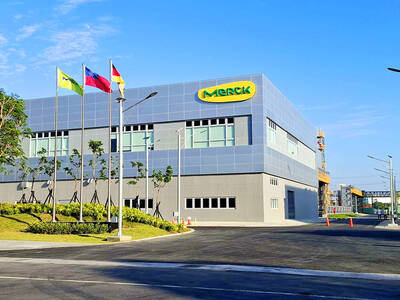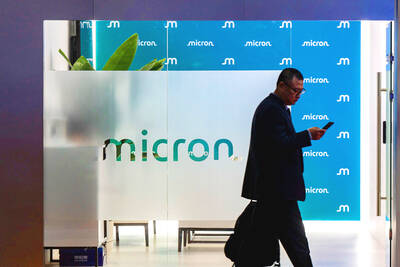Ryusho Soeda, 66, has taken on a job for which his career as a Buddhist priest never prepared him: forensic accounting.
Soeda’s temple is the 1,200-year-old Koyasan, a World Heritage site deep in the mountains of western Japan and long prized as a haven for quiet contemplation. However, in recent months monks here have been debating a very worldly question: How did a complex bet on the yen go so horribly wrong?
Soeda, who was picked to head Koyasan last month June after his predecessor was forced out, has promised a full accounting of the temple’s losses, which at one point last year threatened to wipe out half of its endowment.
“My duty is to find out exactly what has happened and to publish it. Just like Greece published its window-dressing only after they had a new government, the truth will not come to the light unless you change the power,” Soeda said.
The financial crisis at Koyasan is an example of an overhang of losses that cash-rich Japanese religious groups, schools, small firms and wealthy individuals are facing — and in some cases fighting in court — because of financial derivatives tied to the yen.
CURRENCY DERIVATIVES
Fujita Health University, which runs one of Japan’s biggest hospitals, lost US$240 million on currency derivatives. Nanzan University in Nagoya said this year it had lost more than US$230 million. Both schools took their losses from derivatives that were sold to them in the unsupervised, over-the-counter market. In many other cases, the losses have been driven by a product called a “power-reverse dual currency bond” (PRDC), a derivative marketed heavily to non-profit investors in Japan.
The losses highlight a problem Japanese Prime Minister Shinzo Abe has vowed to address: The nation’s long-running economic slump has left its massive savings stranded in dead-end investments and left investors desperate for yield.
Abe has pledged to revive the world’s third-largest economy and foster growth that can outstrip renewed inflation of 2 percent, but doing so will also mean driving a change in mindset by Japanese investors and driving home the message that risk follows return.
PRDC offered a higher return at a time when the yield on 10-year Japanese government bonds was stranded at less than 1 percent. Their popularity peaked in 2006 and 2007, just before the onset of the global financial crisis.
Kansai University economics professor Yoshio Yoshimoto said many universities jumped without reading the fine print.
“One might wonder whether these schools should teach economics to students in the first place’” he said.
Non-profits in Japan are not required to mark losses to market. Partly as a result, total losses from derivative bets gone bad are hard to estimate. However, in one indication of the extent of the problem, there are about 300 ongoing lawsuits over such losses, said Akiyoshi Motosugi, a lawyer in Tokyo. Most claim that the risks of the derivatives were not fully explained by the banks that sold them.
One of those is by Komazawa University, a Buddhist-affiliated school in Tokyo. The university lost US$160 million in 2008 on currency derivatives purchased from Deutsche, BNP Paribas and UBS.
Deutsche and BNP Paribas declined to comment. UBS said it was contesting the claim.
KNOCKOUT CLAUSE
PRDC bonds were often structured to carry a high coupon for the first year. After that the coupon was determined by the rate of the yen. A knockout clause was typically set so that the bonds would be redeemed if the yen weakened past a certain threshold against the US dollar or the Australian dollar.
That meant the investors accepted the risk of no interest payments if the yen were to strengthen — as it did from late 2007 to late last year. The knockout clause capped upside.
Many of the bonds were issued in London’s unregulated offshore eurobond market. According to Thomson Reuters data, there are about ¥5.2 trillion (US$518 billion) of eurobonds with a complex coupon outstanding. A large share of those are PRDC bonds or similar derivatives. Others have yields linked to other volatile assets like the Nikkei share average.
The yen’s fall since Abe took office has eased the pain for investors, but many still have unrealized losses since the US dollar has not recovered to its levels of 2006 and 2007 when it traded above ¥110.
Koyasan is a case in point. The temple had a loss of about US$6.5 million in March, although that was half of what it faced in May last year, said Yasuo Wakita, an official in charge of accounting. The derivatives were sold to Koyasan by Nomura Securities and Daiwa Securities. Both declined to comment.
After 2008, Japan’s Financial Services Agency (FSA) took steps to tighten rules on marketing of complex derivatives to colleges and other non-profits. Regulators said they were not aware of any large losses from products that came after the tighter rules were in place.
The FSA has urged investors to be more aware of investment risks and for fund managers to adopt appropriate internal checks on investment decisions.
Yoshio Shima, a professor of business at Tamagawa University, says the Japanese government should go further, drawing an example from the British government. Last year, London’s financial watchdog, then the Financial Services Authority, forced four banks to compensate small and mediium-sized firms for some interest rate derivative losses, as well as tightening rules on the marketing of those products.

TECH TITANS: Amazon’s latest chip joins Google in competing for the 90 percent market share held by Nvidia, which claims it is ‘a generation ahead of the industry’ Amazon Web Services (AWS) on Tuesday launched its in-house-built Trainium3 artificial intelligence (AI) chip, marking a significant push to compete with Nvidia Corp in the lucrative market for AI computing power. The move intensifies competition in the AI chip market, where Nvidia dominates with an estimated 80 to 90 percent market share for products used in training large language models that power the likes of ChatGPT. Google last week caused tremors in the industry when it was reported that Facebook-parent Meta Platforms Inc would employ Google AI chips in data centers, signaling new competition for Nvidia. This followed the release last month of

INSULATED: The company said it is less exposed to global complications, as it has built a strong footprint worldwide, and has multiple sources of rare earths and raw minerals Merck Group yesterday said it would ramp up production next year at its new flagship facility in Kaohsiung’s Lujhu District (路竹) to satisfy growing demand for advanced semiconductor materials and specialty gases, and to address supply resilience issues amid mounting geopolitical risks. Merck made the remarks during a news conference before the inauguration of its 500 million euros (US$582.1 million) facility, which is also to supply other markets in the Asia-Pacific region, it said. Merck executive board deputy chair and electronics CEO Kai Beckmann told reporters the company adopted a “local-for-local” strategy about seven years ago to address the cycle time of

Two companies wholly owned by the daughter of the founder of Hon Hai Precision Industry Co (鴻海精密) on Monday reported to the Taiwan Stock Exchange that they would dispose of all of the Hon Hai shares they hold. In filings with the exchange, Hong Wei Investment Co (鋐維) said it would sell the 2.771 million Hon Hai shares it holds and Frontier Investment Corp (承鋒投資) said it would sell its 2.409 million Hon Hai shares from tomorrow until Jan. 3 next year. The two companies are wholly owned and chaired by Shirley Gou (郭曉玲), the eldest daughter of Hon Hai founder Terry

RIDING THE WAVE: The race to build AI infrastructure has lifted the valuations of top memory makers, such as Micron, amid dwindling inventories and supply challenges Micron Technology Inc is to spend ¥1.5 trillion (US$9.6 billion) to build a plant in western Japan to make memory chips for artificial intelligence (AI) applications, the Nikkei reported on Saturday. The move comes as Micron seeks to diversify advanced chip production outside of Taiwan, the Nikkei article said, citing people familiar with the matter. The new factory will manufacture high-bandwidth memory (HBM) chips, a key component for working with AI processors such as those made by Nvidia Corp, the report said. Micron would build the facility within the compound of its Hiroshima plant, starting in May next year, with plans to launch